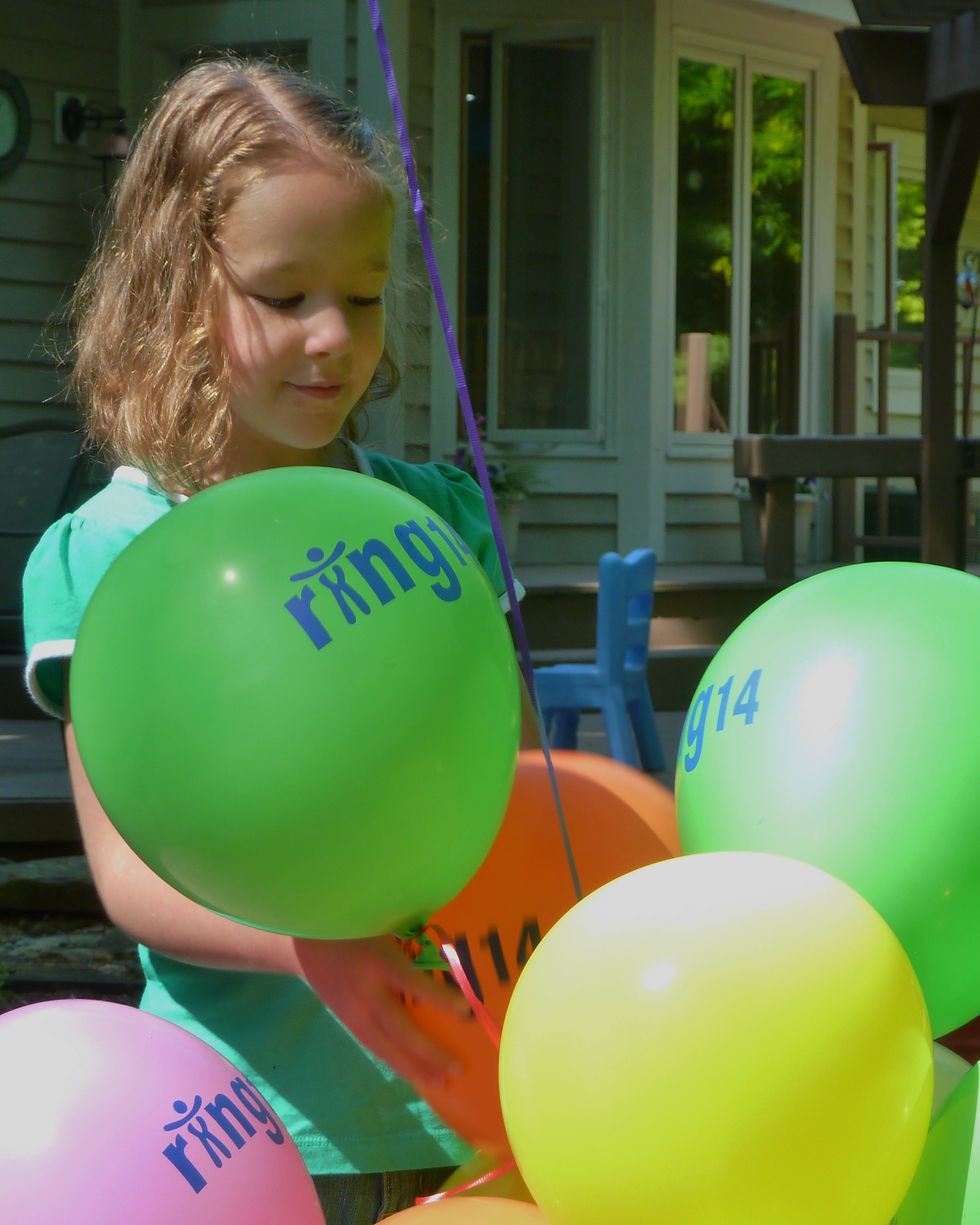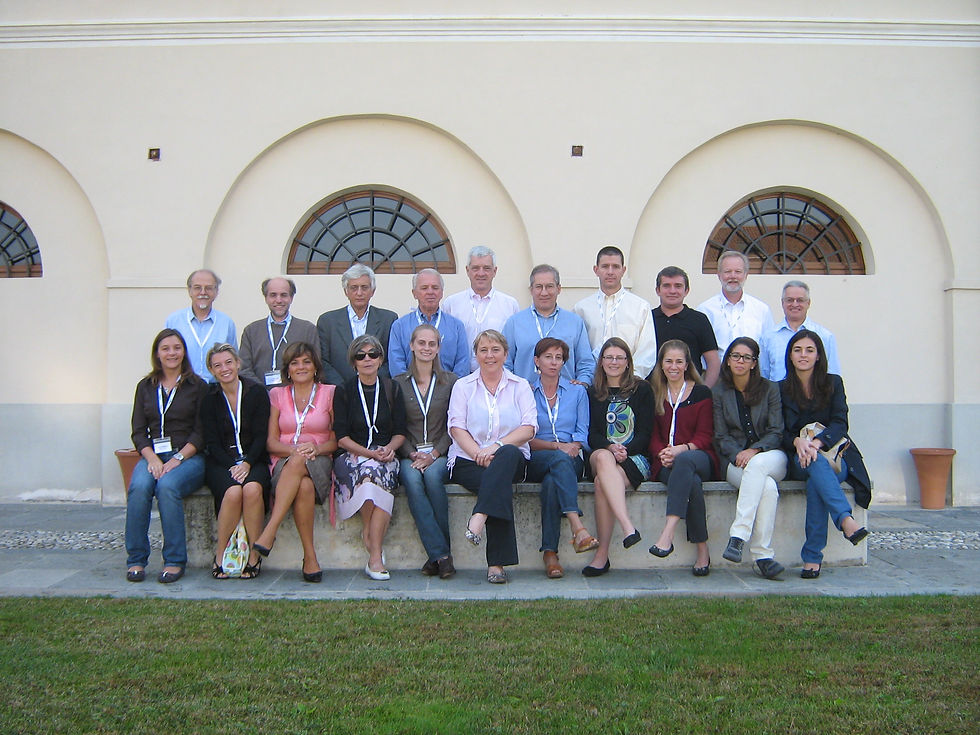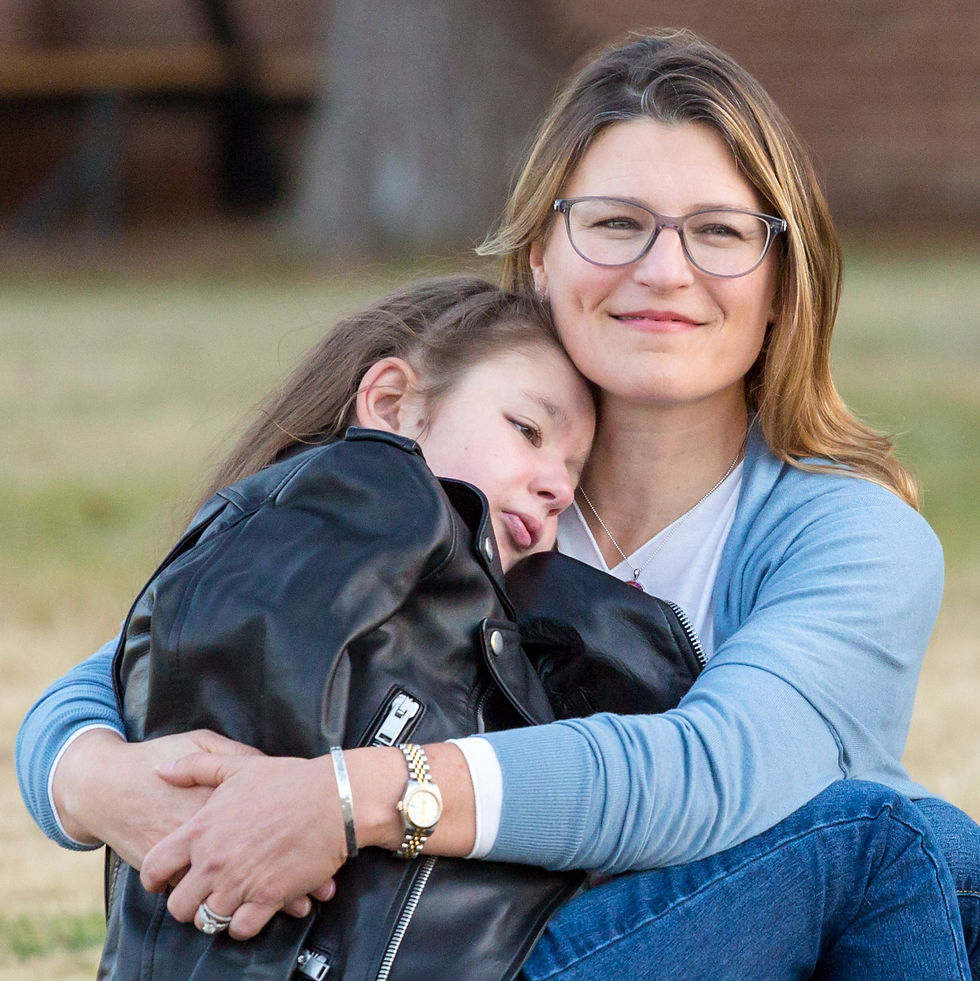Get To Know Ring14 USA
- REN

- Oct 4, 2020
- 5 min read
Updated: Apr 25, 2021

About Ring14
Ring14 USA supports all neurodevelopmental anomalies on the 14th chromosome, in particular, Ring Chromosome 14 Syndrome. R(14) is a structural aberration usually caused by a de novo mutation where small terminal deletions of the 14th chromosome are followed by the fusion of the two ends resulting in a ring structure. The size of the terminal deleted region is variable and ranges from less than one to a few megabases and can include complex rearrangements. Ring instability is common resulting in mosacism with monosomy 14. R(14) syndrome (OMIM #616606) is characterized by early onset refractory epilepsy, intellectual disability, autism spectrum disorder and a number of diverse health issues. Although its prevalence and incidence are unknown, it is thought to be extremely rare with an occurrence less than 1/1,000,000. To date, over 80 cases have been described since it was first reported in 1971. Despite being identified 50s year ago, there is still much to be learned about this syndrome’s pathophysiology as precise genotype-phenotype correlations have proven difficult. It is known that haploinsufficiency caused by deletions is not an exhaustive explanation for r(14) syndrome. In fact, the evidence that the clinical phenotype of ring carriers is usually more severe than that observed in patients with similar linear 14q terminal deletions suggests that ring conformation might produce perturbation of the epigenetic state of specific genes along chromosome 14. Conventional cytogenetics is still the primary tool to identify a ring chromosome. Children with a terminal deletion of chromosome 14q ascertained by molecular karyotyping (CGH/SNP array) should be tested secondarily by conventional cytogenetics for the presence of a ring chromosome to diagnosis r(14).
Ring14 Clinical Features

Clinical features of r(14) syndrome generally include peculiar facial dysmorphisms, psychomotor delay, occasional retinal abnormalities, and intractable epilepsy. Facial dysmorphisms are only present in patients with r(14) syndrome carrying a long arm terminal deletion of at least 650 kb. In contrast to this, all individuals with r(14) syndrome, with or without deletions, suffer from epilepsy. Onset of epilepsy can be variable, but usually occurs in the first months of life. Seizures may be either primarily generalized, tonic-clonic, myoclonic-tonic and clonic or focal starting from the temporal or frontal lobe with a secondary generalization. Seizures can occur in clusters, lasting a day or more and status epilepticus has been reported in about half of the individuals. Intense epileptic activity, more frequent in the early years of life, may be associated with regression suggesting a possible encephalopathic effect of epilepsy. Another consistent feature of individuals affected by r(14) syndrome is moderate to severe intellectual disability. This variable impairment does not appear to depend on the presence or absence of a deletion nor on its length, but rather on the time of onset and severity of epileptic seizures: an earlier onset is related to higher degree of disability and to the presence of possible autistic traits. Language is one of the most affected developmental area. Other recurring features include microcephaly, hypotonia, scoliosis, sleep apnea, and increased incidence of infections, particularly respiratory infections which often require hospitalization. Gastrointestinal symptoms and malnutrition affect many children. These issues often lead to a placement of a feeding tube. Despite all these challenges, children with r(14) syndrome tend to be very good natured; they are quite happy and social on good days.
Get to Know Ring14 USA
Ring14 USA (ring14usa.org) is a national nonprofit founded in 2011 by five mothers whose children are affected by r(14) syndrome, but our organization supports all those affected by rare neurodevelopmental syndromes of the 14th chromosome. Our children and their families face tremendous challenges – they need treatment options, better therapies, support, and hope. With this in mind, we raise funds to promote research, raise awareness, and support families by providing educational resources, facilitating social networks, and hosting family conferences. All research efforts are organized through Ring14 International (ring14.org), our international parent nonprofit that coordinates the shared objectives of all the national Ring14 chapters. Together, we fund critical research projects, organize scientific workshops, and maintain both a biobank and clinical database to aid our researchers.

I am especially proud of ...
If I had to choose just one thing that I am particularly proud of it would be how Ring14 USA coordinates with Ring14 International to organizes our international research workshops. We have had three such workshops (2011, 2014, 2019) – all in Italy. The first workshop was held in 2011, and it was my participation in this event that really motivated me to organized Ring14 USA. It was a small invitation only conference with elite scientists who really knew nothing about r(14) syndrome but were encouraged to attend based on the weight and standing of our growing Scientific Advisory Board (and beautiful retreat location). In return, they were asked to learn about r(14), share their expertise, and give headspace to how it might relate to our challenges, and ultimately participate in a brainstorming exercise which helped shape our future research initiatives. It was the first time I was introduced to many of the tools of the rare research community – IPSC lines, phenotype/genotype correlation studies, mouse models, biobanks and clinical databases – and I was hooked. From this workshop, we committed to funding two research proposals (pursuing a mouse model and a gene expression study). We were also the recipients of a pro bono study to develop our first IPSC lines – proof that the patient story does indeed inspire researchers just like funders. Since this first workshop, we have hosted two additional workshops which have grown in size and in impact including diverse stakeholders from academia, clinicians, rare disease nonprofits, and public health institutes. This workshop model has resulted not only in an increased awareness of our disorder but also a rich expansion of interested researchers and motivated SAB members.
Excited to REN because...
The power of REN comes from the synergistic energy and compounded weight of bringing together all organizations whose mission aligns with REN’s mission to collaboratively improve outcomes of patients living with a rare epilepsy through patient-centered research and advocacy. To be able to reach across the syndromes and pursue common initiatives as a network is both a smart and efficient use of energy, funds, and manpower. I believe we can bring more people to the bench and more services to the bedside of our children by working together for the collective good of these underserved and underrepresented communities.
My journey and motivation...

Like so many others in this space, I arrived here because of a precious child, my youngest daughter Marie. Marie was born in April of 2005 and started having clusters of seizures at 3 months. Within a month of onset, we had a diagnosis of r(14) syndrome due to a simple karyotype which was part of the standard genetic workup at the time. Not much was known about this ultra-rare syndrome, but we understood enough to know that our lives were headed in a different direction. A trip to Italy in 2007 for the first Ring14 family conference was so impactful – meeting the families, seeing the range of abilities among the affect children, hearing the clinicians and researchers talk about all the challenges, but ultimately finding few answers. It took some time to learn how to balance the care of this fragile child with the care the rest of my family needed while still trying to maintain my professional life in academia as a mathematician. For a while it seemed untenable to add anything else to our life, but priorities shift as needs are exposed. And in 2011 it was time to join the fight to improve the lives of other families within this small community by founding Ring14 USA. One child brought me into this space, but all the incredible children and families I have met along the way and those still yet to come keep me here.
By Yssa DeWoody, PhD. Cofounder and President of Ring14 USA










Comments